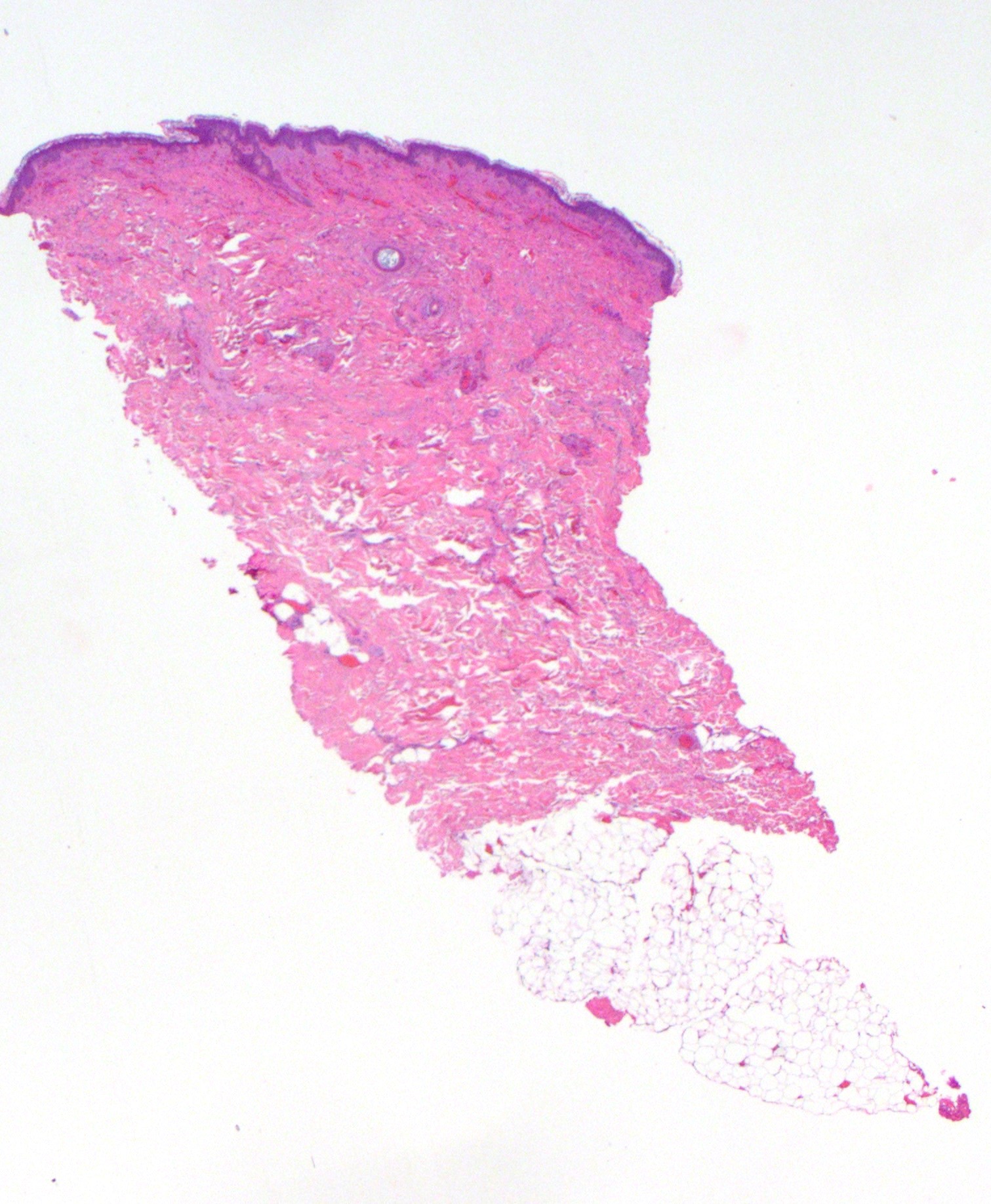Final case diagnosis: Consistent with Nicolau's Syndrome as the Unique Form of Iatrogenic Ischemic Dermopathy.
Diagnosis comment: The biopsy is compatible with the iatrogenic acute ischemic dermopathy syndrome or Nicolau's syndrome. It is probable that the abnormal occlusive diathesis in the deep artery represents the key mechanism of the ischemia, which is one of the iatrogenic injection of the naltrexone into the arterial system, resulting in vascular occlusion leading to the secondary ischemic changes that are evident clinically and light microscopically. Arterial embolization by the drug, trauma and irritation of vascular structures, compression of vessels by arterial embolism of the drug, crystallization of drugs in the vessels and para-arterial injections damaging adjacent vessels are among the theoritical considerations for the pathogenesis of Nicolau's syndrome. As already mentioned in this case there is evidence of an intra-arterial thrombus likely containing the drug based on the unnatural florette ameboid shape of the thrombus.
There likely is a further role for complement pathway activation in the pathogenesis of the vascular compromise. There is, indeed, a very striking amount of complement, namely C5b-9 and to a lesser extent C3d and C4d throughout the vessels. The ensuing degeneration that occurs because of the arterial occlusion is ant impetus for the activation of the alternative pathway where a component of complement-mediated microvascular injury is also likely pathogenetically relavent to Nicolau's syndrome.
There is literature precedent on Nicolau's syndrome following the intramuscular injection of naltrexone. The cases that are reported in the literature are remarkably similar to this patient's presentation. The ischemia can affect the fat and muscle depending on the level of arterial occlusion.






